Notes
- ↑ Chemical Education in Japan_Chapter 3
- ↑ (in Japanese) 金沢工業大学ホームページ
Technical education in Japan occurs at both secondary, further and tertiary education levels. The initial nine-years of education is compulsory and uniform in coursework.
Entry to Kōsen Colleges of Technology and technical high schools is at age 15 years. The kōsen basically provide five-years of training (although most provide the succeeding two-year course as well). For the graduates, transferring tracks are provided to universities and graduate schools. The high schools provide three-years of training, and the graduates are qualified to, but comparatively hard to proceed to tertiary education, for the usual university entrance examination is not considered for the case. There are 62 kōsen colleges and ??[ quantify ] technical high schools.
Western-style began in earnest in the Meiji period with the founding of the British-dominated Imperial College of Engineering. Currently it occurs in the engineering faculty of Tokyo University and other engineering faculties of public and private universities nationwide. The ratio of engineering to science students was 6-to-1 in 1992. [1] There are a number of technical universities called Institutes of Technology, such as Tokyo Institute of Technology, Kyushu Institute of Technology and Nagoya Institute of Technology and others. Most are national universities, although Osaka Institute of Technology and Kanazawa Institute of Technology [2] are private. In addition, two- or three-year private vocational colleges are also very popular, and the graduates in most four-year courses are qualified to proceed to graduate schools. Most of these tertiary students come through three-years of general education at high schools.

A college is an educational institution or a constituent part of one. A college may be a degree-awarding tertiary educational institution, a part of a collegiate or federal university, an institution offering vocational education, a further education institution, or a secondary school.

A community college is a type of undergraduate higher education institution, generally leading to an associate degree, certificate, or diploma. The term can have different meanings in different countries: many community colleges have an "open enrollment" for students who have graduated from high school. The term usually refers to a higher educational institution that provides workforce education and college transfer academic programs. Some institutions maintain athletic teams and dormitories similar to their university counterparts.
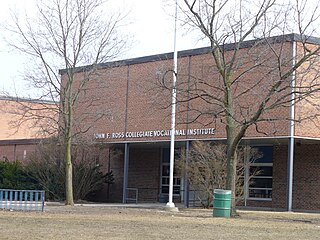
Vocational education is education that prepares people for a skilled craft as an artisan, trade as a tradesperson, or work as a technician. Vocational education can also be seen as that type of education given to an individual to prepare that individual to be gainfully employed or self employed with requisite skill. Vocational education is known by a variety of names, depending on the country concerned, including career and technical education, or acronyms such as TVET and TAFE.
Education in Japan is managed by the Ministry of Education, Culture, Sports, Science and Technology (MEXT) of Japan. Education is compulsory at the elementary and lower secondary levels. Most students attend public schools through the lower secondary level, but private education is popular at the upper secondary and university levels. Education prior to elementary school is provided at kindergartens and day-care centres. The programmes for those children aged 3–5 resemble those at kindergartens. The educational approach at kindergartens varies greatly from unstructured environments that emphasize play to highly structured environments that are focused on having the child pass the entrance exam at a private elementary school. The academic year starts from April and ends in March, having summer vacation in August and winter vacation in the end of December to the beginning of January.
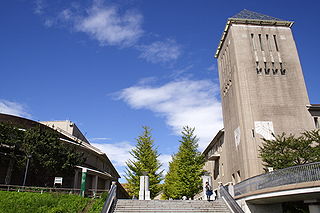
Tokyo Metropolitan University, often referred to as TMU, is a public research university in Hachioji, Tokyo, Japan.

A vocational school, trade school, or technical school is a type of educational institution, which, depending on the country, may refer to either secondary or post-secondary education designed to provide vocational education or technical skills required to complete the tasks of a particular and specific job. In the case of secondary education, these schools differ from academic high schools which usually prepare students who aim to pursue tertiary education, rather than enter directly into the workforce. With regard to post-secondary education, vocational schools are traditionally distinguished from four-year colleges by their focus on job-specific training to students who are typically bound for one of the skilled trades, rather than providing academic training for students pursuing careers in a professional discipline. While many schools have largely adhered to this convention, the purely vocational focus of other trade schools began to shift in the 1990s "toward a broader preparation that develops the academic" as well as the technical skills of their students.
An institute of technology is an institution of tertiary education that specializes in engineering, technology, applied science, and natural sciences.

King Mongkut's Institute of Technology Ladkrabang is a research and educational institution in Thailand. It is situated in Lat Krabang District, Bangkok approximately 30 km east of the city center. The university consists of nine faculties: engineering, architecture, science, industrial education and technology, agricultural technology, information technology, food industry, liberal arts, and medicine.
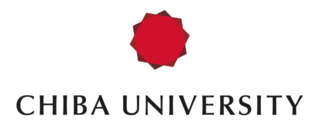
Chiba University is a national university in the city of Chiba, Japan. It offers Doctoral degrees in education as part of a coalition with Tokyo Gakugei University, Saitama University, and Yokohama National University. The university was formed in 1949 from existing educational institutions in Chiba Prefecture, and over a period of years absorbed Chiba Medical University (1923-1960), a preparatory department of the Tokyo Medical and Dental University, Chiba Normal School (1872-1951), Tokyo Polytechnic High School (1914-1951), Chiba Horticultural High School, among others. Chiba University was reincorporated in 2010 under the National University Corporation Act. Chiba University has been ranked 168th on the Asia University Rankings 2019 Top 100 by "The Times Higher Education". Its abbreviated form is Chibadai (千葉大).

Chuo University, commonly referred to as Chuo (中央) or Chu-Dai (中大), is a private research university in Hachioji, Tokyo, Japan. Founded in 1885 as Igirisu Hōritsu Gakkō, Chuo is one of the oldest and most prestigious institutions in the country. The university operates four campuses in Tokyo: the largest in Hachiōji, one in Bunkyō, and two others in Shinjuku. Chuo is organized into six faculties, ten graduate schools, and nine research institutes. There are also four affiliated high schools and two affiliated junior high schools.
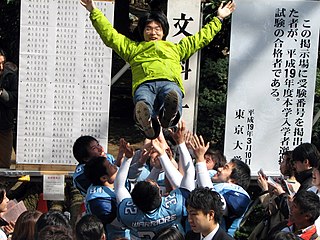
Higher education in Japan is provided at universities, junior colleges, colleges of technology and special training schools and community colleges. Of these four types of institutions, only universities and junior colleges are strictly considered postsecondary education providers. The modern Japanese higher education system has undergone numerous changes since the Meiji period and was largely modeled after Western countries such as the United States of America, Mexico, Canada, Britain, Ireland, Spain, Portugal, France, Germany, Netherlands, Italy, Denmark, Norway, Sweden, Finland, Iceland, Australia, and New Zealand with traditional Japanese pedagogical elements to create a unique Japanese model to serve its national needs. The Japanese higher education system differs from higher education in most other countries in many significant ways. Key differences include the method of acceptance, which relies almost entirely on one or two tests, as opposed to the usage of GPAs or percentages or other methods of assessment and evaluation of prospective applicants used in Western countries. As students only have one chance to take this test each year, there is an enormous amount of pressure to do well on this test, and the majority of senior high school education is dedicated to doing well on this single test. Japanese students are faced with immense pressure to succeed academically from their parents, teachers, peers, and society. This is largely a result of a society that has long placed a great amount of importance on higher education, and a system that places all of its weight upon a single examination that has significant life-long consequences towards one's socioeconomic status, promising marriage prospects, and a respectable white-collar professional career path.

Shinshu University, abbreviated to Shindai (信大), is a Japanese national university located in Matsumoto, Nagano Prefecture, Japan. As the only university in Japan bearing the name of a former Japanese province, it bears the name "Shinshu", and is firmly rooted in the many regions of Nagano Prefecture. It was the 18th ranked higher education institution in Japan.

Education in Sri Lanka has a long history that dates back two millennia. While the Constitution of Sri Lanka does not provide free education as a fundamental right, the constitution mentions that 'the complete eradication of illiteracy and the assurance to all persons of the right to universal and equal access to education at all levels" in its section on directive principles of state policy at (27. Sri Lanka's population had an adult literacy rate of 96.3% in 2015, which is above average by world and regional standards. Computer literacy in 2017 28.3% and phone users in 2017 105%, website users 32% in 2017. Education plays a major part in the life and culture of the country, which dates back to 543 BC. Sri Lanka's modern educational system modeled after Christian missionary system was brought about by its integration into the British Empire in the 19th century. Education currently falls under the control of both the Central Government and the Provincial Councils, with some responsibilities lying with the Central Government and the Provincial Council having autonomy for others. Education institutions with a tradition dating back to 5 BC are largely ignored by the state.
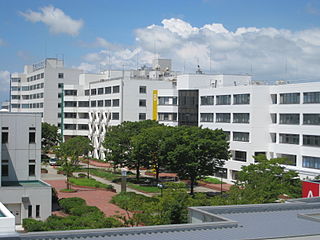
Toyohashi University of Technology, often abbreviated to Toyohashi Tech or TUT, is a national engineering university located in Toyohashi, Aichi, Japan. Distinguished for the upper-division student body where over 80% of them are transfer students from 5-year Technical Colleges called Kōsens, the Toyohashi Tech is one of the only two Universities of Technology, a form of universities in Japan, the other being Nagaoka University of Technology. Toyohashi Tech is also noted for the fact that majority of the students proceed to graduate schools. The university is locally nicknamed Gikadai (技科大).
A "KOSEN " is the translated Japanese word used to describe the kōsen educational Japanese college system, a variety of programmes of 5 years of study at a collegiate level. The kōtō-senmon-gakkō (高等専門学校), often abbreviated to "KOSEN" (高専) are attended by students 15 years old or older.

Yamaguchi University is a national university in Yamaguchi Prefecture, Japan. It has campuses at the cities of Yamaguchi and Ube.

Tokyo University of Marine Science and Technology, abbreviated as Kaiyodai, is a national university in Japan. The main campus is located in Minato, Tokyo and another campus is in Kōtō, Tokyo.
The Technical and Vocational Training Corporation (TVTC) is a training institute in Saudi Arabia. In existence since 23 June 1980, it has branches in all major Saudi cities.

Yamagata University (YU) (山形大学, Yamagata daigaku) is a national university located in the Japanese cities of Yamagata, Yonezawa, and Tsuruoka in Yamagata Prefecture.

Kanagawa Institute of Technology (KAIT) is a private university in Atsugi, Kanagawa Prefecture, Japan.